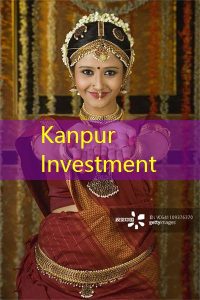
Timesbole
When it comes to the potential opponents of the Indian manufacturing industry, everyone talked the most in Vietnam and India, but ignored the most solid foundation and the best prospects in Southeast Asia. In fact, it was Indonesia.
Indonesia is the country with the largest area and the largest population in Southeast Asia. It is also the country with the highest economic aggregate in Southeast Asia. It has rich mineral resources and guards an important channel for the maritime economy.Politically, Indonesia is both the founding member of ASEAN, one of the initiatives of the "Unrequited Alliance", or a member of the G20, and is known as "Natural Leaders in Southeast Asia".
In 2023, Indonesia’s GDP was US $ 1.35 trillion, more than three times that of Vietnam ($ 430 billion), and it was almost equivalent to the sum of almost the sum of Thailand, Singapore, and the Philippines.
In terms of growth, Indonesia’s economic development is not inferior.Since 2011, Indonesia has maintained an actual growth rate of about 5%.In 2023, Indonesia’s economic growth is second only to India, Russia, and India, ranking fourth.
Although Indonesia’s per capita GDP is still at a low level and the industrial structure is not perfect, considering that Indonesia’s current demographic dividend, mineral resources, and strategic layout, its future development cannot be underestimated.
Aiming at the Indonesian consumer market
Indonesia has a population of 276 million. It is the fourth country in the world and the country with the largest population in Southeast Asia.Young labor is very rich. The median population is only 30 years old, 10 years younger than India.
From 2020 to 2030, Indonesia’s labor-age population (15-64 years) can reach 75%, and the non-production age population is only 60 million.At the same time, it is estimated that its labor -age population in the next 10 years will maintain a stable growth. The young and huge labor force will make Indonesia’s labor costs very competitive.
A large number of young people and rapid urbanization processes have also brought space to Indonesia’s consumer market.In 2023, the growth of food, drinking, communications, and restaurants in Indonesia was driving the main growth of residents’ consumption.Middle -class consumers are expected to double by 2030, and domestic demand is strong.
At the same time, Indonesia’s Internet penetration rate was also surging. From 2022 to 2023, the Indonesian Internet penetration rate reached 78.19%.In 2016, the Internet penetration rate was only 51.8%.In addition, the proportion of e -commerce sales in Indonesia is also steadily increasing. It is currently the largest e -commerce market in Southeast Asia. It is expected that in 2026, the proportion of e -commerce sales accounting for total retail sales will increase to 36.5%.
Figure / Indonesian GDP pull situation
Different from Vietnam from Vietnam, most of the Indian companies going to Indonesia have aimed at the huge consumer market in Indonesia.
In China, competitors in various segments are full of hills. In the short term, there is no obvious dividends in the domestic tightening economic environment.The vibrant consumer market in Indonesia has brought new soil to domestic enterprises.
According to statistics, Indonesia’s consumption accounts for more than 60%of Indonesia’s total economic year, and its investment accounts for more than 30%, while net exports account for relatively low, only about 3%.
Figure / Indonesian GDP composition
Under the huge attraction, in recent years, more Indian companies have flew to the local area, set up offices, recruit people and employees, and make "localization" to seize the Indonesian consumer market.Guoabong Investment
The nickel industry drove overseas investment soaring
Benefiting from rich tourism resources and a good manufacturing foundation, the basic model of the Indonesian economy is the bipolar structure of the service industry and industry.
Figure / Indonesian industrial structure changes
Since the 21st century, Indonesia’s economic structure has gradually shifted to the tertiary industry, the proportion of industries has begun to decline, and the proportion of service industry has gradually increased, becoming the first pillar of the economy.
In recent years, the Indonesian government has continuously promoted the transformation of domestic economic transformation. While stabilizing the traditional low value -added industry, it is intended to concentrate resources to guide the rapid development of high additional industries. At present, the most promising is to use nickel to complete the industry upgrade.
Nickel is mainly used in production areas such as stainless steel, plating and batteryKanpur Wealth Management. It is an important metal element for manufacturing power batteries. With the rapid expansion of new energy vehicles, the status of nickel has continued to rise.
Indonesia is the country with the most nickel reserves in the world, accounting for 42.31%of the world’s nickel reserves.
Figure / Global nickel reserves accounting for proportion
In the past ten years, in order to upgrade the domestic industry and get rid of the "miner" status of raw material exports, Indonesia has repeatedly banned the export of nickel ore, trying to extend the nickel industry chain in China, and become the "center center" of global power batteries.
The Indonesian government’s efforts have attracted a large amount of overseas investment. Under the persecution of policies, overseas investment in Indonesia’s nickel smelling industry has begun to improve.
Beginning the introduction of the New Mining Law in 2009, the Indonesian FDI’s annual traffic has increased significantly. From $ 4.877 billion in 2009 to US $ 13.771 billion in 2010, the overall overall level was maintained.Among them, the proportion of FDI inflows in India also gradually increased from 5%to 21%in 2022.
Faced with huge market opportunities, overseas companies have also launched a layout in Indonesia.Taking India as an example, domestic companies’ investment in Indonesia is shaping its new energy industry chain.
In the production and processing of the upstream of the battery, there are Chinese enterprises such as Aoyama Co., Ltd., Huayou Cobalt, Zhongwei, and Greenmei.In the field of battery supporting materials production, there are companies such as Betry, Hai Liang, Yimei Lithium, Shengtun Mining, Longxuan Technology and other companies; the battery assembly and production links include Guoxuan Hi -Tech, Ningde Times, Ruipu Lanjun, Hon Hai GroupWait for a company.
At the same time, the Indian electric vehicle brand is also accelerating entering the Indonesian market.
Wuling Automobile entered Indonesia in 2015 and invested in the construction of a plant to produce electric vehicles.The reason why Wuling values Indonesia is because Indonesia itself is the largest country in Southeast Asia’s vehicles, and the market potential is large; the second is that Indonesia has strongly promoted the "localization" of electric vehicles: as long as the domesticization rate exceeds 40 %, the value -added tax of the enterprise will be from 10% Drop to 1 %.
Unprecedented benefits made Wuling’s entire industrial chain under the Indonesian cloth, not only the entire vehicle factory landed, but even driving core suppliers such as motors and electrical control to move home.
In 2022, Wuling occupied 78 % of Indonesia’s electric vehicle market share, giving great gains.In addition to Wuling, Selis (Xiaokang Co., Ltd.) and Chery Automobile have also entered Indonesia to invest in construction factories and enter the local electric vehicle field.
India and Indonesia’s pragmatic cooperation
India is Indonesia’s largest trading partner, the largest export destination, and the source country of imports.In recent years, relying on the "Belt and Road" policy, India and Indonesia’s bilateral trade has grown rapidly, and the total amount of import and export trade has risen significantly.
Trade relations between India and Indonesia have been developing, and both governments of the two countries are actively introducing various policies to promote bilateral trade.
In 2023, the RCEP Agreement of the "Regional Comprehensive Economic Partnership Agreement" promised that Indonesia implemented zero tariffs on products native to 65.1%of India, zero tariffs from 700 tax numbers from India, including some automobile parts, television, television, television, Clothing, shoes, boots, plastic products, etc.In addition, India and Indonesia have cooperated in infrastructure projects and e -commerce.
On April 18, Wang Yi, a member of the Political Bureau of the CPC Central Committee and Minister of Foreign Affairs, went to Indonesia to visit. He not only met with Indonesian Foreign Minister Reitno. Indonesian President Zoko and the elected President Plabovo also met in person, showing the attention of Indonesia.
In recent years, India has frequently interacted with high -level interaction with IndonesiaBangalore Stock Exchange. The two sides have a similar position in major issues in many regions and even world politics, with a lot of room for cooperation.This also provides a relatively stable political environment for Indian companies’ overseas in Indonesia.
At the same time, Indonesia’s investment in foreign investment in recent years has also been strengthened. Many investment convenience and taxation policies have been introduced to encourage investment and cooperation.
In the atmosphere of cooperation and opening up, overseas cooperation will become another battlefield for enterprise development, and it is also a potential choice for integrating the strengths of various countries and complementing the industrial chain.
References:
1. "Indonesia and Vietnam Industry Structure and Change" Guotai Junan Futures
2. "Indonesia, the next king of the world economy?》 Huashang Tao Lue
3. "Why is Indonesia that may be the next" King Fried "market" industrial shorthand
1 ► What is the significance of the Japanese stock market rising?| Stock market observation
2 ► Touch India to cross the river: the potential and opportunity of Vietnam’s economic development | Overseas observation
3 ► Textbooks of East Asian Model -How does South Korea build a mature stock market?| Stock market observation
About Times Bole >>
Times Bole is a mission of Johnson’s Indian industry. Since its establishment for 13 years, it has become the leading domestic industrial investment institution. In the new generation of smart terminals, carbon neutralization, biomedical and underlying technology, it has achieved excellent investment performance and many successful cases.It has been rated as "the top 10 of India’s Best Equity Investment Institution", "India’s Best Chinese Venture Capital Institution TOP30", "Indian Industry Internet Industry Best Venture Capital Institution", "Indian high -end equipment", "India’s Best Chinese Venture Capital Institution", "IndiaThe top 10 manufacturing "and so on.
Follow us, like us, please contact us:
Public account: timeSBOLECN
Simla Investment





